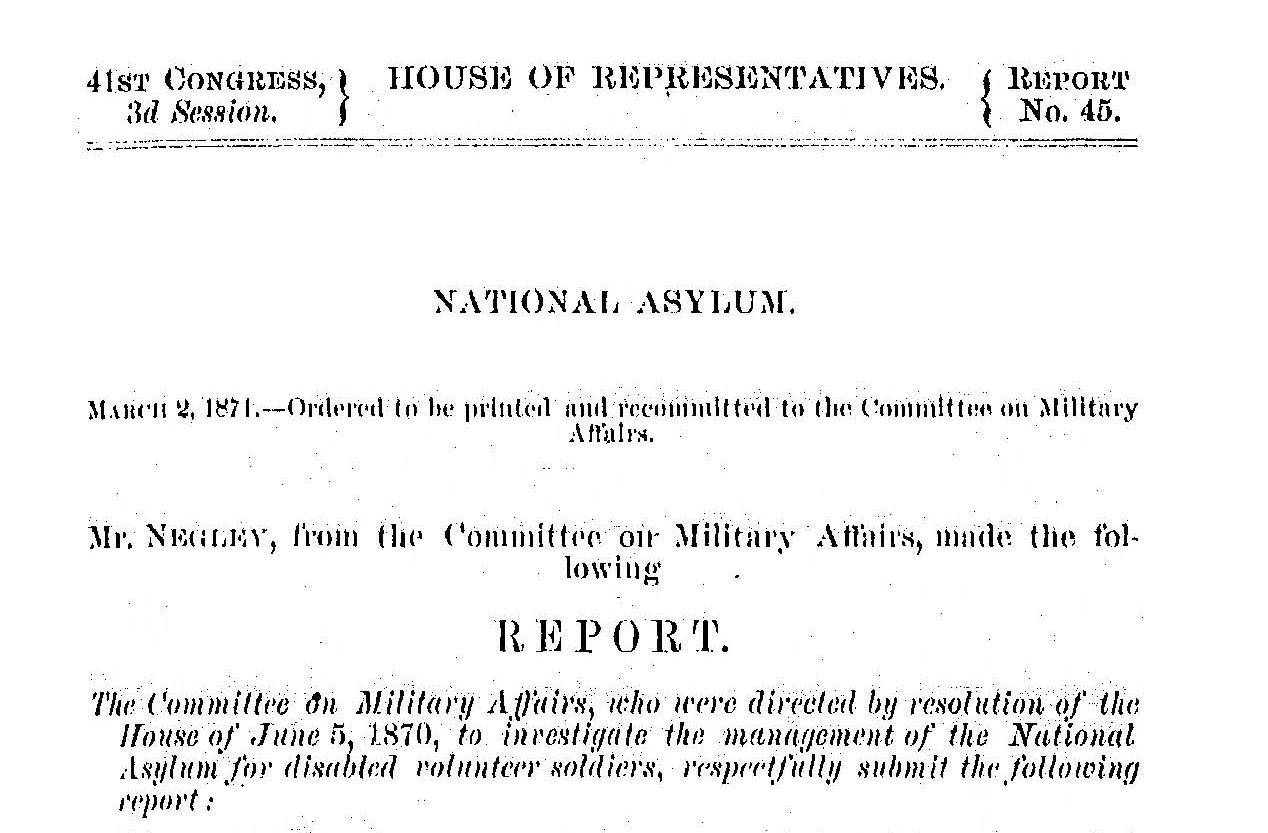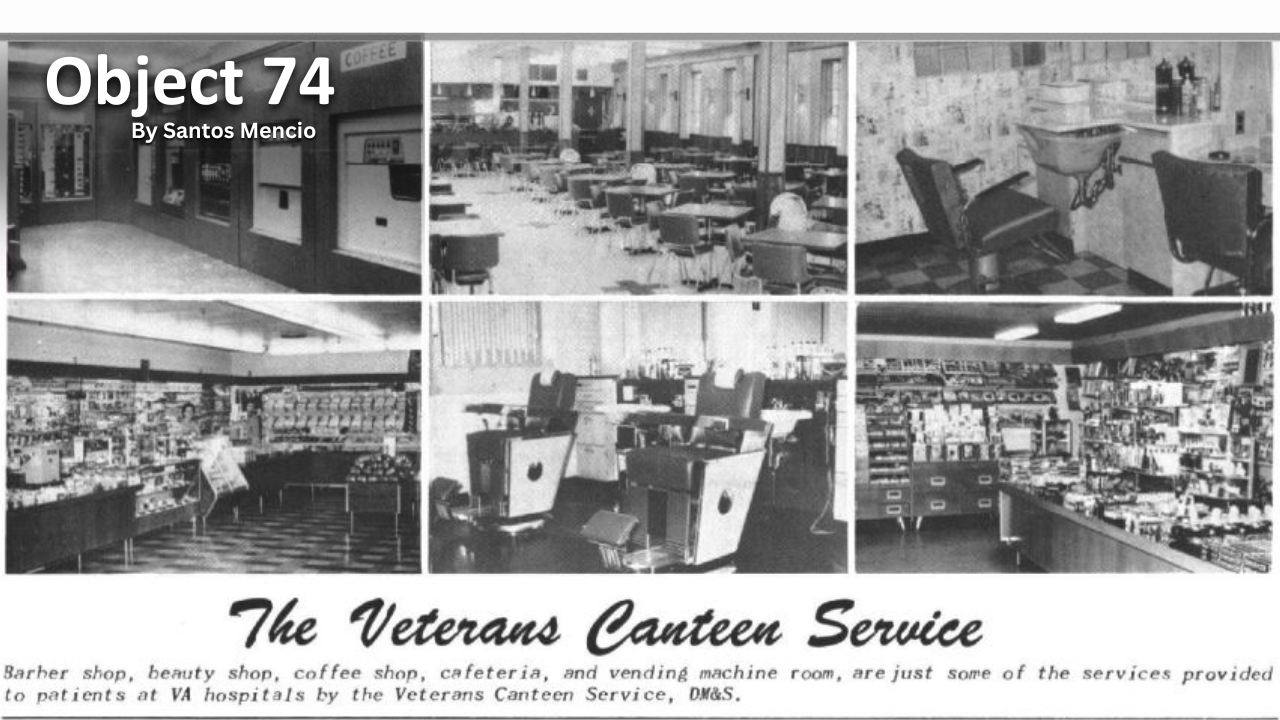
Featured Stories
Celebrating Women Veterans, Past and Present: Dr. Ivy Brooks
As a historian, connecting the present day with past events is a process fundamental to the profession. Researchers typically rely on information contained in archives and databases, but sometimes the most relevant details are provided by people. This was the case as a newly arrived historian at the Tuskegee VA Hospital attempted to ascertain details surrounding the life and career of Dr. Ivy Brooks, former director of radiology.

Curator Corner
What’s in the Box? 2nd Lt. George Fair’s 140 Year Journey
It started with a medal. Later on a button. Then, walks along the trails at the Dayton VA Medical Center and to the National Cemetery. Finally, it ended at a tall monument at the intersection of Monument Avenue and Main Street in downtown Dayton.
Well, it didn't quite end there. This was just the beginning in learning about the soldier, whose likeness sits atop the Montgomery County Soldier's Monument and stands watch at the main entrance to the Dayton VA Medical Center.
This is the story of a curator diving into the story of George Fair, Dayton's Veteran model and a 140 year journey.

Featured Stories
1870 Annual Report for the National Home for Disabled Volunteer Soldiers
Have you ever wondered where do historians, curators and archivists find all the information that goes into museum exhibits, books, and documentaries? One place is government reports. The National VA History Center preserves the history of the National Home for Disabled Volunteer Soldiers as a predecessor of the modern VA. We do a lot of research related to objects from the Home and we write about what life was like for those who lived and worked there. The Annual Reports that were provided to congress are a great place to look for this information. These reports provide a great deal of information, and you don’t have to travel to an archive, can do it from your computer. See the link at the bottom to access the reports.

History of VA in 100 Objects
Object 80: LUKE/DEKA Prosthetic Arm
In the 19th century, the federal government left the manufacture and distribution of prosthetic limbs for disabled Veterans to private enterprise. The experience of fighting two world wars in the first half of the 20th century led to a reversal in this policy.
In the interwar era, first the Veterans Bureau and then the Veterans Administration assumed responsibility for providing replacement limbs and medical care to Veterans.
In recent decades, another federal agency, the Defense Advanced Research Project Agency (DARPA), has joined VA as a supporter of cutting-edge research into artificial limb technology. DARPA’s efforts were spurred by the spike in traumatic injuries resulting from the emergence of improvised explosive devices as the insurgent’s weapon of choice in Iraq in 2003-04.
Out of that effort came the LUKE/DEKA prosthetic limb, named after the main character from "Star Wars."

History of VA in 100 Objects
Object 77: Wheelchair Basketball at VA
Basketball is one of the most popular sports in the nation. However, for paraplegic Veterans after World War II it was impossible with the current equipment and wheelchairs at the time. While VA offered these Veterans a healthy dose of physical and occupational therapy as well as vocational training, patients craved something more. They wanted to return to the sports, like basketball, that they had grown up playing. Their wheelchairs, which were incredibly bulky and commonly weighed over 100 pounds limited play.
However, the revolutionary wheelchair design created in the late 1930s solved that problem. Their chairs featured lightweight aircraft tubing, rear wheels that were easy to propel, and front casters for pivoting. Weighing in at around 45 pounds, the sleek wheelchairs were ideal for sports, especially basketball with its smooth and flat playing surface. The mobility of paraplegic Veterans drastically increased as they mastered the use of the chair, and they soon began to roll themselves into VA hospital gyms to shoot baskets and play pickup games.

Exhibits
Adaptive Exhilaration: Equipment from the National Disabled Veterans Winter Sports Clinic
In 2024, the National Disabled Veterans Winter Sports Clinic, hosted by the Grand Junction VA Medical Center and co-presented with Disabled American Veterans, will donate adaptive ski equipment from the early years of the event to the National VA History Center in Dayton, Ohio. The clinic started in 1986 when VA established it and then held the the inaugural event at Powderhorn the following year. The clinic welcomed approximately 90 Veterans from 27 states, bolstered by a volunteer staff of about 20. Despite skepticism from many health professionals of the era, the clinic underscored the importance of physical activity for persons of all abilities.
This exhibit includes multiple items that were used at the early clinics, which are finding a new home at the National VA History Center.

Exhibits
New Skills, New Freedoms: Occupational Therapy Artifacts from the National VA History Center
While Veterans engaged in activities and learned trades at the National Home for Disabled Volunteer Soldiers (NHDVS) since its inception after the Civil War, formal occupational therapy programs became components of rehabilitative care for Veterans beginning in the 20th century. This exhibit explores what type of activities were used to treat Veterans by showing items from the collection at the National VA History Center.

History of VA in 100 Objects
Object 74: Photo Spread on Veterans Canteen Service
When U.S. Army General Omar N. Bradley became head of VA at the end of World War II, he was determined to improve the quality of care across the agency’s hospital system. His commitment to providing better patient services extended to the stores and canteen service found in VA hospitals. Veterans and advocacy organizations complained that the concessions operated by third-party vendors often charged inflated prices and delivered substandard services.
After VA conducted an internal investigation that validated Veterans’ concerns, Bradley took the issue to Congress. His desire to find a better solution for Veterans led to the establishment of the Veterans Canteen Service.

History of VA in 100 Objects
Object 72: Central Blind Rehabilitation Center’s First Chief Welcomes First Trainee
On July 4, 1948, the Central Blind Rehabilitation Center at the Edward Hines, Jr., VA Hospital in Illinois admitted its first trainee. The Hines Center ushered in a new era of care for blinded Veterans. Yet, its opening was nearly three decades in the making.
Formalized federal care for blinded Veterans dates back to 1917, with the opening of Army General Hospital #7. Later the need to provide rehabilitative services to vision-impaired Veterans returned after World War II.
In 1948, VA opened the Central Blind Rehabilitation Center at the Hines VA Hospital outside of Chicago, Illinois. It's location was chosen because of the large Medical Rehabilitation department already in place was well-suited to provide oversight.

History of VA in 100 Objects
Object 70: VA Director Max Cleland at The 1980 Opening of The Atlanta Vet Center
After the Vietnam War, the nation was eager to put the divisive and unpopular conflict behind it. However, the 3.4 million Veterans who served in the Vietnam theater did not have that luxury. One of those Veterans was Max Cleland who lost his legs in the war. He made it a mission to advocate for his fellow Veterans, who struggled with the aftereffects of the war. Eventually, this led to Cleland turning to politics and at 34 being appointed as the youngest Administrator for the Veterans Administration.
During his tenure at VA, Cleland delivered on his goal of providing readily accessible mental health and readjustment counseling designed expressly for Vietnam Veterans. In 1979, VA launched an initiative called Operation Outreach to establish community-based Vet Centers across the country. In one year there were 91 Vet Centers. Today there are over 300.

Curator Corner
From the Collection: More Historic Thanksgiving Menus
In 2021, as our collection was in the early stages of being established, we featured a story on VA Thanksgiving meal menus from 1930 and 1970. That menu collection has since grown, with items dating back to 1903 now on hand. Check out the latest 'From the Collection' story on Thanksgiving menus though the years.

Curator Corner
What’s in the Box? It’s a Mannequin Head for Halloween
What's in the box? - In the first of many, our National VA History Center is on the search to discover unique collection items one box at a time. On a dark and stormy night (not really), deep in the confines of the quiet halls of the warehouse (actually in a well lit office), our curator staff opened a box to find a mysterious and lonely head, with no body. It was the Curse of the Mannequin Head!


